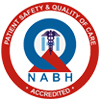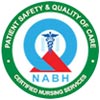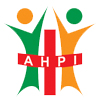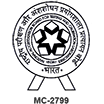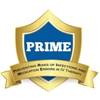
Seizures: Causes, Symptoms, Diagnosis And Treatment
August 22, 2023
What Is A Seizure?
The brain is the center that controls and regulates all voluntary and involuntary responses in the body. It consists of nerve cells that normally communicate with each other through electrical activity. A seizure occurs when part(s) of the brain receives a burst of abnormal electrical signals that temporarily interrupts normal electrical brain function.What Are the Different Types of Seizures?
The type of seizure depends on which part and how much of the brain is affected and what happens during the seizure. The two broad categories of epileptic seizures are generalized seizures (absence, atonic, tonic-clonic, myoclonic) and partial (simple and complex) seizures. Within these categories, there are several different types of seizures in children, including:- Focal seizures. Focal seizures take place when abnormal electrical brain function occurs in one or more areas of one side of the brain. Focal seizures may also be called partial seizures. With focal seizures, particularly with complex focal seizures, the child may experience an aura before the seizure occurs. The most common aura involves feelings such as deja vu, impending doom, fear, or euphoria. Visual changes, hearing abnormalities, or changes in the sense of smell can also be auras. Two types of partial seizures include:
- Simple focal seizures. The child may show different symptoms depending upon which area of the brain is involved. If the abnormal electrical brain function is in the occipital lobe (the back part of the brain that is involved with vision), the child's sight may be altered. However, more commonly, a child's muscles are affected. The seizure activity is limited to an isolated muscle group, such as fingers or to larger muscles in the arms and legs. Consciousness is not lost in this type of seizure. The child may also experience sweating, nausea, or become pale.
- Complex focal seizures. This type of seizure commonly occurs in the temporal lobe of the brain, the area of the brain that controls emotion and memory function. This seizure usually lasts one to two minutes. Consciousness is usually lost during these seizures. Losing consciousness may not mean that a child passes out--sometimes, a child stops being aware of what's going on around him or her. The child may look awake but have a variety of behaviors. These behaviors may range from gagging, lip smacking, running, screaming, crying, and/or laughing. When the child regains consciousness, he or she may complain of being tired or sleepy after the seizure. This is called the postictal period.
- Generalized seizures. Generalized seizures involve both sides of the brain. There is loss of consciousness and a postictal state after the seizure occurs. Types of generalized seizures include the following:
- Absence seizures (also called petit mal seizures). These seizures are characterized by a brief altered state of consciousness and staring episodes. Typically the child's posture is maintained during the seizure. The mouth or face may move or the eyes may blink. The seizure usually lasts no longer than 30 seconds. When the seizure is over, the child may not recall what just occurred and may go on with his/her activities, acting as though nothing happened. These seizures may occur several times a day. This type of seizure is sometimes mistaken for a learning problem or behavioral problem. Absence seizures almost always start between ages 4 to 12 years.
- Atonic (also called drop attacks). With atonic seizures, there is a sudden loss of muscle tone and the child may fall from a standing position or suddenly drop his/her head. During the seizure, the child is limp and unresponsive.
- Generalized tonic-clonic seizures (also called grand mal seizures). The classic form of this kind of seizure, which may not occur in every case, is characterized by five distinct phases. The body, arms, and legs will flex (contract), extend (straighten out), tremor (shake), a clonic period (contraction and relaxation of the muscles), followed by the postictal period. Not all of these phases may be seen with every one of this type of seizure. During the postictal period, the child may be sleepy, have problems with vision or speech, and may have a bad headache, fatigue, or body aches.
- Myoclonic seizures. This type of seizure refers to quick movements or sudden jerking of a group of muscles. These seizures tend to occur in clusters, meaning that they may occur several times a day, or for several days in a row.
- Infantile spasms. This rare type of seizure disorder occurs in infants from before six months of age. There is a high occurrence rate of this seizure when the child is awakening, or when they are trying to go to sleep. The infant usually has brief periods of movement of the neck, trunk, or legs that lasts for a few seconds. Infants may have hundreds of these seizures a day. This can be a serious problem, and can have long-term complications.
- Febrile seizures. This type of seizure is associated with fever and is not epilepsy, although a fever may trigger a seizure in a child who has epilepsy. These seizures are more commonly seen in children between 6 months and 5 years of age and there may be a family history of this type of seizure. Febrile seizures that last less than 15 minutes are called "simple," and typically do not have long-term neurological effects. Seizures lasting more than 15 minutes are called "complex" and there may be long-term neurological changes in the child.
What Are The Symptoms Of A Seizure?
The child may have varying degrees of symptoms depending on the type of seizure. The following are general symptoms of a seizure or warning signs that your child may be experiencing seizures. Symptoms or warning signs may include:- Staring
- Jerking movements of the arms and legs
- Stiffening of the body
- Loss of consciousness
- Breathing problems or breathing stops
- Loss of bowel or bladder control
- Falling suddenly for no apparent reason, especially when associated with loss of consciousness
- Not responding to noise or words for brief periods
- Appearing confused or in a haze
- Nodding the head rhythmically, when associated with loss of awareness or even loss of consciousness
- Periods of rapid eye blinking and staring
What Causes A Seizure?
A child may experience one or many different types of seizures. While the exact cause of the seizure may not be known, the more common seizures are caused by the following:- In newborns and infants:
- Birth trauma
- Congenital (present at birth) problems
- Fever/infection
- Metabolic or chemical imbalances in the body
- In children, adolescents, and young adults:
- Alcohol or drugs
- Trauma to the head or brain injury
- Infection
- Congenital conditions
- Genetic factors
- Unknown reasons
- Other possible causes of seizures may include:
- Brain tumor
- Neurological problems
- Drug withdrawal
- Medications
- Use of illicit drugs
How Are Seizures Diagnosed?
The full extent of the seizure may not be completely understood immediately after onset of symptoms, but may be revealed with a comprehensive medical evaluation and diagnostic testing. The diagnosis of a seizure is made with a physical examination and diagnostic tests. During the examination, the physician obtains a complete medical history of the child and family and asks when the seizures occurred. Seizures may be due to neurological problems and require further medical follow up. Diagnostic tests may include:- Blood tests
- Electroencephalogram (EEG) - a procedure that records the brain's continuous, electrical activity by means of electrodes attached to the scalp.
- Magnetic resonance imaging (MRI) - a diagnostic procedure that uses a combination of large magnets, radiofrequencies, and a computer to produce detailed images of organs and structures within the body.
- Computed tomography scan (Also called a CT or CAT scan.) - a diagnostic imaging procedure that uses a combination of X-rays and computer technology to produce horizontal, or axial, images (often called slices) of the body. A CT scan shows detailed images of any part of the body, including the bones, muscles, fat, and organs. CT scans are more detailed than general X-rays.
- Lumbar puncture (spinal tap) - a special needle is placed into the lower back, into the spinal canal. This is the area around the spinal cord. The pressure in the spinal canal and brain can then be measured. A small amount of cerebral spinal fluid (CSF) can be removed and sent for testing to determine if there is an infection or other problems. CSF is the fluid that bathes your child's brain and spinal cord.
How Are Seizures Treated?
Specific treatment for a seizure will be determined by your child's doctor based on:- Your child's age, overall health, and medical history
- Extent of the condition
- Type of seizure
- Your child's tolerance for specific medications, procedures, or therapies
- Expectations for the course of the condition
- Your opinion or preference
- Proper identification of the type of seizure
- Using medication specific to the type of seizure
- Using the least amount of medication to achieve adequate control
- Maintaining good medicating levels
- Medications There are many types of medications used to treat seizures and epilepsy. Medications are selected based on the type of seizure, age of the child, side effects, the cost of the medication, and the adherence with the use of the medication.
- Blood work - frequent blood draws testing is usually required to check the level of the medication in the body. Based on this level, the physician may increase or decrease the dose of the medication to achieve the desired level. This level is called the "therapeutic level" and is where the medication works most efficiently. Blood work may also be done to monitor the affects of medications on body organs.
- Urine tests - these tests are performed to see how the child's body is responding to the medication.
- Electroencephalogram (EEG) - a procedure that records the brain's continuous, electrical activity by means of electrodes attached to the scalp. This test is done to monitor how the medication is helping the electrical problems in the brain.
- Ketogenic diet - Certain children who are having problems with medications, or whose seizures are not being well controlled, may be placed on a special diet called the ketogenic diet. This type of diet is low in carbohydrates and high in protein and fat.
Recent Blogs
- Signs You Need to See a Doctor for Kidney Pain
- What Is A Nuclear Radiologist
- GUIDE TO NUCLEAR MEDICINE IMAGING
- Nuclear Medicine In Oncology
- Advancements In Nuclear Medicine Technology
- The Role Of Radiotracers In Nuclear Medicine
- An Introduction To Nuclear Medicine
- Cardiac Catheterization: When Is It Required?
- Types Of Pediatric Cardiology Test
- Tips For Preventing Heart Problems In Kids
- Advances In The Diagnosis Of Congenital Heart Disease In Children
- Signs Of Heart Problems In Children
- What Is A Pediatric Cardiologist?
- Understanding Congenital Heart Defects In Children
- Pediatric Cardiac Surgery: Types And Considerations
2023
- December (6)
- November (8)
- Cardiac Catheterization: When Is It Required?
- Types Of Pediatric Cardiology Test
- Tips For Preventing Heart Problems In Kids
- Advances In The Diagnosis Of Congenital Heart Disease In Children
- Signs Of Heart Problems In Children
- What Is A Pediatric Cardiologist?
- Understanding Congenital Heart Defects In Children
- Pediatric Cardiac Surgery: Types And Considerations
- September (7)
- Lifestyle Changes To Prevent Diabetes
- New Innovative Advances In Diabetes Treatment
- The Link Between Obesity And Diabetes
- Monitoring Blood Sugar At Home
- The Importance Of Regular Diabetes Check-ups
- Understanding Diabetes: Types, Causes, Symptoms & Treatment
- Lower Blood Sugar Naturally: Managing Blood Sugar Through Diet
- August (8)
- What’s The Difference Between A Neurologist And Neurosurgeon?
- Dementia: Causes, Symptoms, Diagnosis And Treatment
- Seizures: Causes, Symptoms, Diagnosis And Treatment
- Epilepsy: Causes, Symptoms, Diagnosis And Treatment
- Is Autism A Neurological Disorder? Causes, Symptoms & Diagnosis
- Pediatric Neurology: Neurological Disorders In Pediatrics
- What Are The Most Common Neurological Disorders?
- Types Of Neurosurgery: Overview, Procedure & Costs
- July (11)
- Types of Cardiac Stents
- Types of nuclear cardiology tests
- What Are the Different Types of Heart Surgery and Their Purposes?
- What is the difference between Cardiologist and Cardiothoracic Surgeon?
- What is the difference between Invasive, Non Invasive and Interventional Cardiology?
- What are the different Cardiology Subspecialties?
- What Are The Do’s And Don’ts For The Embryo Transfer Process?
- 5 Myths Over IVF
- Superfoods That Can Boost Your Chances of IVF Success
- What Is Male Infertility? Treatments For Male Infertility
- Causes of Male and Female Infertility
- April (4)
- March (1)
-

Share with us
Click Here -

Organ Transplantation
Click Here
Copyrights © 2024 PSG Hospitals. All Rights Reserved.


